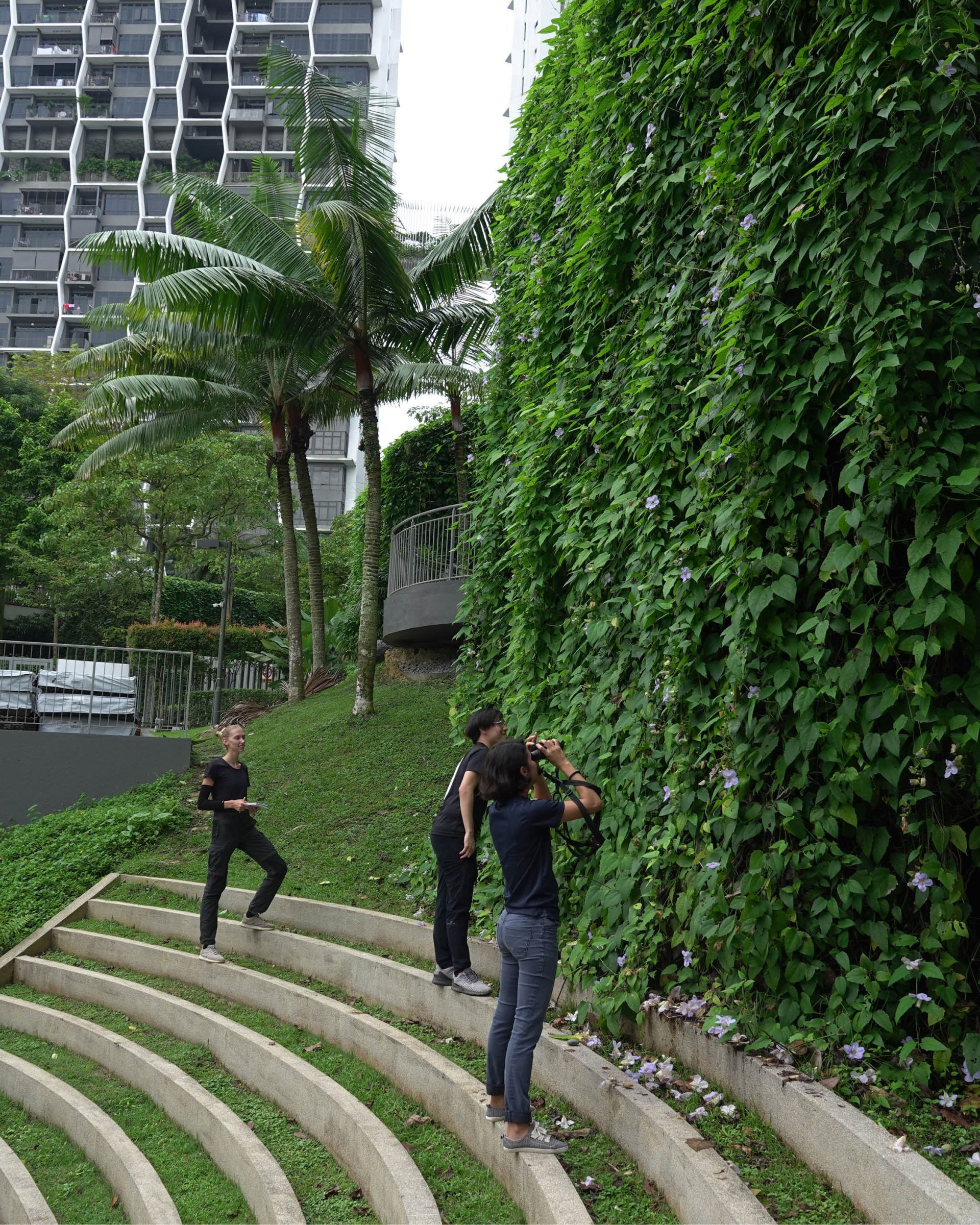-
Collaborators
Utrecht University & Nanyang Technological University
-
Location
Singapore
-
Scale
Building
-
Status
Research
-
Services
Biodiversity Survey & Impact Assessment, Ecosystem Service Assessment
-
Use
Mixed-use
-
Year
2022 - 2023
Vertical Green Wall Assessment, Singapore



Project Summary
Leanne Hann and Katharina Hecht of Utrecht University interned at bioSEA, Singapore and worked in collaboration with Nanyang Technological University (NTU) Singapore to conduct a study on vertical greenery systems (VGS). The study aimed to investigate the biodiversity capacity and thermal performance of VGS compared to conventional walls and their natural counterparts, rock cliffs.
The study involved conducting biodiversity surveys and measuring air temperature, humidity, and surface temperature of six existing VGS in Singapore. The hypothesis was that cliffs would be preferred over VGS in terms of habitat and would have thermal properties contributing to a cooler microclimate. The study also examined the impact of plant species count, VGS height, plant species composition, and wall orientation on biodiversity and thermal performance. Bare reference walls were used as a comparison, and measurements were repeated at three rock cliffs.
Overall, the findings of the study indicated that while natural areas like rock cliffs are preferred habitats for most species, VGS contribute to urban nature conservation through their rich biodiversity. The number of plant species on VGS alone did not determine species richness and abundance, highlighting the significance of appropriate plant selection. Although VGS have a limited impact on reducing air temperatures compared to urban heat island mitigation, they still hold potential for a cooling effect when implemented on a larger scale. These findings provide insights into the synergies and trade-offs within VGS and their comparison to natural counterparts, informing future implementation and optimization.
Associated Links
Journal paper documented the project’s findings – Rocks and walls: Biodiversity and temperature regulation of natural cliffs and vertical greenery systems
